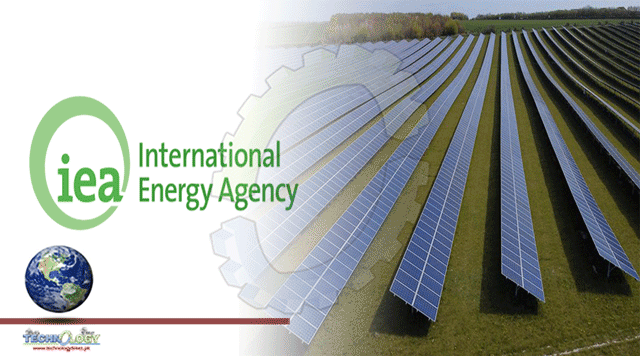The International Energy Agency (IEA) Has Said It Expects Annual Solar PV Additions Globally To Surpass 160GW By 2022.

The International Energy Agency (IEA) Has Said It Expects Annual Solar PV Additions Globally To Surpass 160GW By 2022, Affirming The Technology’s Position As The “New King” Of Global Electricity Markets. Despite pandemic-induced supply chain challenges and construction delays, the energy watchdog said in its latest Renewable Energy Market Update that there was a 23% year-on-year expansion of new PV installs in 2020 to almost 135GW – lower than the 141GW amount put forward from BloombergNEF (BNEF).
The figure is significantly above IEA’s projection in its renewables report from last year, which said PV additions would decline from the 109GW of capacity deployed in 2019 to over 90GW in 2020. With PV now the lowest-cost option for electricity generation in many countries, the IEA forecasts annual solar PV expansion to reach 145GW in 2021 and 162GW in 2022, breaking records and accounting for almost over 55% of all renewable energy expansion this year and next. The share of utility-scale applications in annual PV additions is forecast to increase from over 55% in 2020 to almost 70% in 2022.
In a report published in February, BNEF said PV installs could reach as much as 221GW in 2022 and 240GW in 2023, however these figures may be a little optimistic given the polysilicon supply constraints that have since been revealed. In terms of all renewables additions, 2020 saw installs grow at their fastest rate in two decades – up 45% year-on-year to 280GW – leading the IEA to raise its deployment forecast by more than 25% on previous estimates, as governments auction record amounts of capacity and interest in corporate power purchase agreements (PPAs) continues to grow. The agency’s report from last year had forecasted deployment to be severely hit by coronavirus-related challenges, forecasting just 167GW of renewables additions in 2020.
According to the IEA, the increase in 2020 is set to become the “new normal” despite a slowdown in China following an “exceptional expansion” that resulted from developers rushing to complete projects before subsidy phase-outs. “Wind and solar power are giving us more reasons to be optimistic about our climate goals as they break record after record. Last year, the increase in renewable capacity accounted for 90% of the entire global power sector’s expansion,” said Fatih Birol, executive director of the IEA. “Governments need to build on this promising momentum through policies that encourage greater investment in solar and wind, in the additional grid infrastructure they will require and in other key renewable technologies such as hydropower, bioenergy and geothermal.”
The report said any slowdown in China in the coming years will be compensated for by strong growth in Europe, the US, India and Latin America, where government support and falling prices for solar PV and wind continue to drive installations. The updated forecast for the US is more optimistic because of federal tax credit extensions.
The report also suggested that the impact of PV supply chain constraints and higher commodity prices on module prices is not expected to last through 2021. China’s production of polysilicon is expected to be geographically diversified through several new plants outside Xinjiang province that will become operational in 2021 and 2022. The IEA said that despite relatively high commodity and freight prices, it expects module prices to be lower at the end of 2021 than the average Chinese price in 2020, which was around US$0.205 per watt.
This news was originally published at PV Tech.